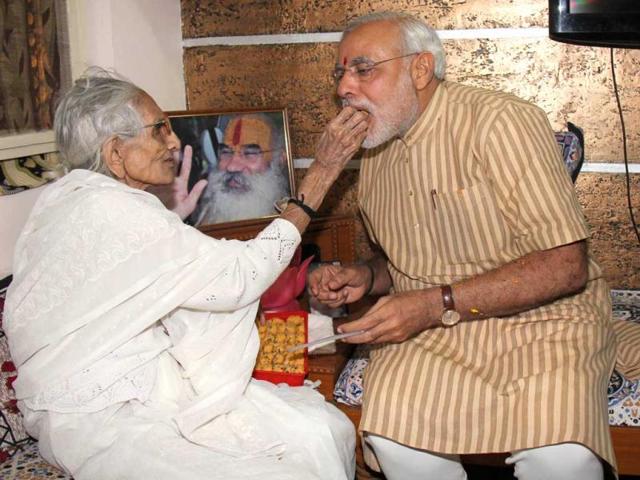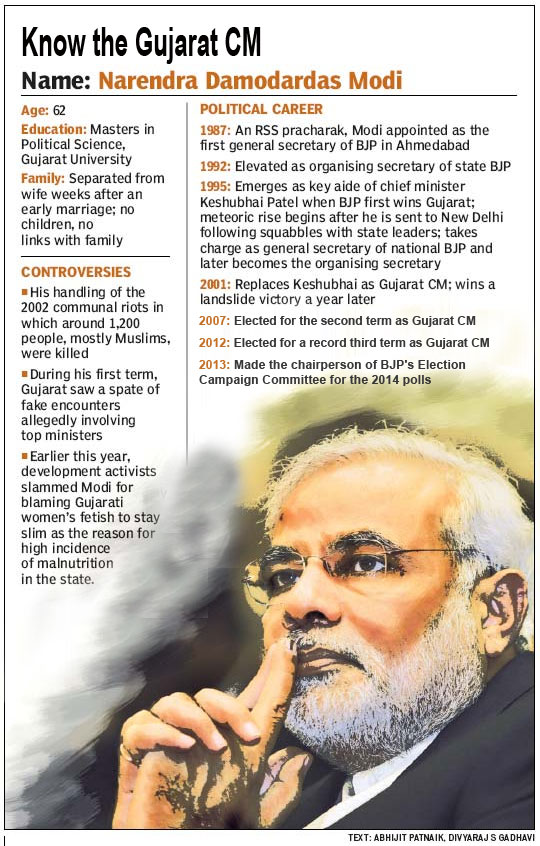Importance of being Narendra Modi
Meet Narendra Damodardas Modi, the 62-year-old Gujarat strongman who won a record third victory as chief minister, in a verdict of such national interest that few precedents match it in independent India’s political history. Rajesh Mahapatra and Mahesh Langa report.
His detractors hate his guts; his supporters swear by him. He is a politician who apparently delivers on governance. He is a loner, yet no other leader connects with the electorate of Gujarat as he does. For politics, he blends modern technology with medieval ideology. He is a demagogue par excellence and a master strategist. He turns adversity into opportunity with ease.

Meet Narendra Damodardas Modi, the 62-year-old Gujarat strongman who won a record third victory as chief minister, in a verdict of such national interest that few precedents match it in independent India’s political history.
From an RSS pracharak in the 1980s to a frontrunner for a prime ministerial nomination in 2014, Modi’s meteoric rise in politics makes as much of an action-packed biography as a reflection of the paradoxes that have underlined India’s social and economic transformation over the past two decades.

Born into a lower middle class family in Vadnagar village in northern Gujarat’s Mehsana district, Modi joined the ranks of the RSS — the ideological fountainhead of the BJP — when he was in school. His first break in politics came when he was appointed the first general secretary of the BJP’s Ahmedabad unit in 1987. Five years later, after the party’s impressive victory in the city’s municipal elections, he was elevated as organising secretary of the state BJP.
When the BJP formed its first government in Gujarat, Modi, then 45, emerged a key aide of chief minister Keshubhai Patel. He allegedly heightened the rift between Keshubhai and party stalwart Shankersinh Vaghela, who later walked out to join the Congress.
Vaghela’s defection precipitated a political crisis, forcing mid-term elections in the state. The BJP won, but Modi was shifted out of the state for falling out with Keshubhai and taken to New Delhi as the party’s national general secretary. Subsequently, he got elevated as organising secretary.
Keshubhai’s government had become unpopular for mishandling reconstruction work following the Gujarat earthquake of 2000. Modi was sent back to Gujarat to replace Keshubhai.
With less than a year left to go for the next elections, in which the BJP’s prospects appeared discounted, Modi clearly needed a strategy that broke with the practice of the past.
In February 2002, Gujarat witnessed widespread Hindu-Muslim riots following the burning of a train that was carrying kar sevaks from Ayodhya. The riots killed at least 1,200 people, mostly Muslims, and left the state communally polarised.
Modi, who was accused of not doing enough to stop the violence, cashed in again, emerging as the new icon of hardline Hindutva politics — a tag he now desperately wants to disown. For, the stains of the 2002 riots are what stand in his way to the high table of New Delhi.
This story was originally published on December 21, 2012





